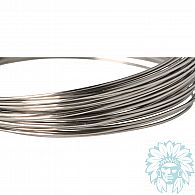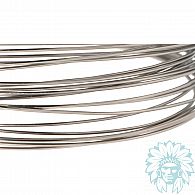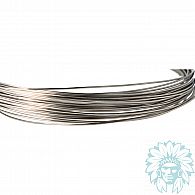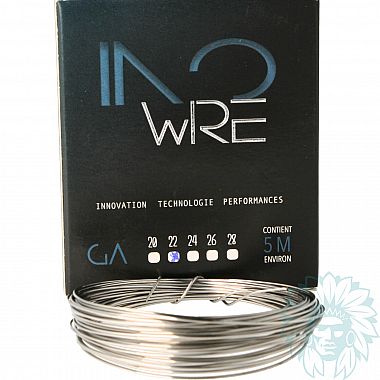Inowire 304L stainless steel resistive wire
Diameter: 0.40 mm, 0.51 mm, 0.64 mm - Material: SS316
Available in 22 awg (0.64 mm), 24 awg (0.51 mm) and 26 awg (0.40 mm).
5-metre bobbin.
- Calumette, the world's only ISO 9001-certified vape retailer
- Loyalty reward
- Payment by credit card, cheque
- You will be notified by SMS when order shipped
Inowire 304L stainless steel resistive wire
Made in France, the Inowire 304L stainless steel resistive wire has a hollow body for highly reactive heating of your assemblies, whether for Variable Wattage or SS Temperature Control. These wires are perfectly suited to single-coil assemblies.
Advantages
- Excellent responsiveness
- Suitable for Variable Wattage and Temperature Control
Specifications
- Length: 5 metres
- Diameter: 0.40 mm (26 awg)
- Diameter : 0.51 mm (24 awg)
- Diameter: 0.64 mm (22 awg)
User guide
You vape and want to get started with rebuildable atomisers by creating your own assemblies, your own coils, upgrading or replacing certain parts of your e-cig. Before you get started, here's some useful information:
- Resistive and non-resistive wires :
- Resistive wires: wires that conduct heat under the action of electrical energy (battery). Once heated, the wire transforms the e-liquid into a vapor.
- Non-resistive wires: this wire does not conduct heat, but it does conduct the electrical current to the resistive wire.
- Properties of the different alloys :
- Khanthal is an iron-chromium-aluminium alloy. This material can withstand high temperatures. It is an excellent conductor of heat.
- Stainless steel (SS316) is malleable and not very susceptible to corrosion.
- Nichrome (Ni) is an alloy of chromium and nickel that withstands high temperatures. It has a high heat resistivity.
- Titanium (Ti) is a lightweight material that resists corrosion and high temperatures. It protects the internal components from a sudden rise in temperature.
Depending on the alloy used, the coil will be more or less resistive. For example, for the same diameter, Nichrome will be more resistive than Khantal. That's why it's important to adapt the wire to the equipment you're using. If you have a box with temperature control (temperature between 100° and 300°), you will need to use Titanium (Ti) or Ni200 wire, which can withstand these temperatures.
- Diameters :
The ohm value of your coil depends on the diameter of the resistive wire used. The thicker the diameter, the lower the resistance in ohms (low resistance). In other words, the thicker your coil wire (large diameter), the faster and stronger it heats up. More hit, more vapor.
- Essential equipment:
- Cutting pliers: to cut your different wires precisely.
- a Kuro concept kit or steel rod for microcoil to wrap the wire around and create coils perfectly equal to the selected diameter.
- coil wire adapted to your equipment.
- a digital ohmmeter to check the value of the coil resistance and avoid short circuits.
- Ceramic-head pliers for handling the coils.
- Organic cotton.
Advice
- Resistive wire should only be used by experts. Once you've built your coil, be sure to check the resistance value using an Ohm meter to avoid any risk of short circuits.
Reviews of Inowire 304L stainless steel resistive wire
recommend
this product
rating
(1 reviews)
- 100% (1)
- 0% (0)
- 0% (0)
- 0% (0)
- 0% (0)
-
 Christian P. -
Christian P. -












